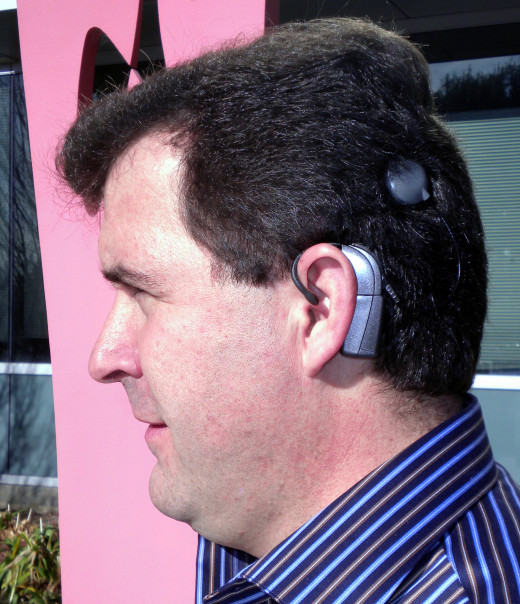What Makes You a Cyborg?

What is a cyborg, anyway?
Merriam-Webster defines a cyborg as such:
“a person whose body contains mechanical or electrical devices and whose abilities are greater than the abilities of normal humans.”
By that definition, the dental fillings you have in your mouth right now (if you’re like me) fit the bill. Fillings are considerably better than the enamel of your tooth at withstanding bacteria and decay, and are much more likely to last for your whole life than your natural, unaugmented tooth.
A friend of mine has a titanium knee he had installed after a parachute landing went bad. Millions have artificial ligaments in their knees, nature’s most poorly designed joint.
I am a cyborg, and so can you
What makes all of us human is our unique ability to use tools to manipulate our environment and communicate with one another. We've been doing this for hundreds of thousands of years, and we're just now starting to figure out where this might be taking us as a species. All of us have been augmenting ourselves since the beginning, and now we're starting to use the same strategy with our bodies and minds to powerful effect.
Maybe some less subtle examples
You don’t have to dig very deep into the internet to find more obvious examples, like the “brain pacemaker” used to treat Parkinson’s disease, in which a computer is implanted inside the human brain itself in order to treat the tremors resulting from Parkinson’s in real time. Called deep brain stimulation, this treatment has been in use since the 1990s and continues to rapidly evolve today.
Along the same lines, the “iron lung” has been in use since the 19th century, and artificial hearts “pacemakers” are commonplace today.

The future
The future clearly holds a great deal more physical augmentation, starting with those who need it most. Ekso Bionics and others are leading the way toward helping paraplegics walk for the first time, integrating the latest technology with the way human beings walk and go about their normal days. On the near horizon, commercially available suits that respond to your thought patterns will be on the market. Such devices are already being tested on those who need them most.
The collective power of our intelligence and creativity is the only limit here, as engineering is fast catching up with science fiction in many fields. Consider the Kinect for Windows, one of the fastest selling game consoles of all time. Kinect reads your movement and displays the info in a virtual world (on a screen, for now). Our movements are being read by machines in ways never before imagined, and the world is changing rapidly in response.
A cochlear implant

Vote!
Do you currently meet the loose definition of a "cyborg"?
Freaks and geeks unite!
Cochlear implants are helping people who have never heard before enjoy sounds and communication by voice. On the other side of the coin, I remember reading about a man whoimplanted earbuds into his ears. As much as I enjoy listening to audio books when I’m walking my dog, my first reaction to this was of disgust. After a while, I began to think about how irritating the headphones really are. The earbuds would often come out of my ear canal, or the wires would get crossed up, and- worst of all- they would get caught on a drawer or whatever in the kitchen and yank the earbuds out of my ear.
Now I’m not ready to have surgery so that I can have a more convenient listening experience- not yet, anyway. I think that we’re going to see more and more instances of physical augmentation like this, whether it’s for the purposes of listening (as in the earbuds), looking (as in laser eye surgery), or talking (voice box implantation). Eventually the people who can’t see and can’t hear will be able to do so (already happening to a degree), and those who can see will be able to see better, perhaps in the infrared spectrum.
It’s going to be a gradual process, but it’s still going to be relatively quick. By 2029, physical augmentation with computers inside your body will be every bit as common as fillings are today; that is to say, ubiquitous. We’ll all be connected to the internet via devices inside our bodies, and life will be so much better than it is today. Sure, there’s the Orwellian concern of Big Brother taking control of our bodies and minds, and we should definitely be concerned about it, but it’s going to happen, whether we want it to or not. Let’s start the conversation right now.





